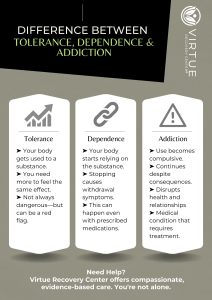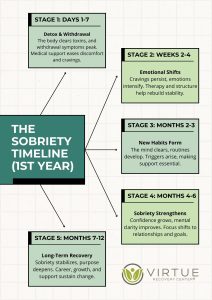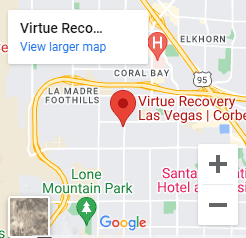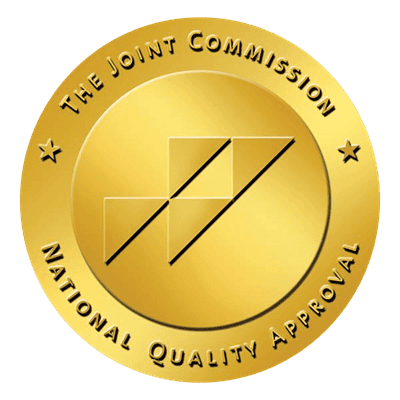Key Takeaways
- MDMA, MDA, and MDX are synthetic drugs often sold as ecstasy or molly.
- Each has different effects on mood, senses, and perception.
- MDA is more hallucinogenic; MDMA is known for emotional effects; MDX is unpredictable.
- These substances can be dangerous, especially when misused or taken unknowingly.
Introduction
Drugs like ecstasy and molly are popular in nightlife and festival scenes. But behind the glowing lights and dance floors, there’s a lot of confusion about what people are actually taking.
Many users think they’re using MDMA. But some pills or powders also contain MDA, or worse—mystery substances called MDX. These drugs may look the same and feel similar at first, but they act differently in the body and come with different risks.
Knowing the difference between MDMA, MDA, and MDX can help people make more informed decisions—and understand when to ask for help.
What Is MDMA? (Commonly Known as Molly or Ecstasy)
MDMA stands for 3,4-methylenedioxymethamphetamine. It’s a synthetic drug in the amphetamine and phenethylamine families. On the street, it’s often sold as “molly” (in powder form) or “ecstasy” (in pill form).
MDMA increases levels of serotonin, dopamine, and norepinephrine, chemicals in the brain that affect mood, energy, and emotions. Users often report feeling euphoric, emotionally connected, and energized.
The effects usually begin within 30 to 60 minutes and last about 4 to 6 hours. During this time, people may feel more social, experience heightened touch or sound, and feel less anxious or self-conscious.
But the crash can be hard. After the high wears off, serotonin levels drop, which can lead to depression, anxiety, and fatigue for days. Repeated use can damage serotonin systems in the brain, leading to long-term emotional and memory problems.
What Is MDA? (Often Called “Sass” or “Sally”)
MDA—3,4-methylenedioxyamphetamine—is closely related to MDMA, but it produces a stronger hallucinogenic effect. It’s also a stimulant and a member of the phenethylamine class.
MDA shares some effects with MDMA, like euphoria and energy. However, it tends to feel more intense and visually psychedelic, and its effects last longer—typically 6 to 8 hours.
People who take MDA may experience stronger visual hallucinations, more stimulation, and a “speedier” sensation. While MDMA is known for creating emotional closeness, MDA tends to be more about sensory and visual experiences.
It also comes with more adverse effects, like jaw clenching, insomnia, anxiety, and sometimes paranoia. While it’s less commonly found than MDMA, it can still show up in pills or powders labeled as ecstasy.
What Is MDX? (The Unknown Variable)
Unlike MDMA or MDA, MDX isn’t a real or official drug name. Instead, it’s often used as a street name or slang term to refer to unknown variations of ecstasy or molly.
MDX may include a mix of MDMA, MDA, and other synthetic chemicals—some of which could be toxic. It’s often found in unregulated or homemade pills and powders that haven’t been tested.
Because it’s unclear what MDX really contains, the effects are unpredictable. One dose may seem mild, while another could lead to overdose or dangerous side effects.
This uncertainty makes MDX especially risky. Users often have no idea what they’re taking, how much they’re taking, or how it will affect them.
Comparing MDMA, MDA, and MDX
All three substances—MDMA, MDA, and MDX—are psychoactive stimulants. They belong to similar chemical families and are often grouped together under the name “ecstasy” or “molly.” But their differences matter.
MDMA is known for its empathogenic effects—users feel emotionally open and connected. It’s the most common form of ecstasy and has been studied for potential medical use in trauma therapy.
MDA, on the other hand, is more hallucinogenic and stimulating. It lasts longer, feels more intense, and can cause more physical strain on the body.
MDX is a wildcard. It’s not one single drug, but a term that often hides a dangerous mix of unknown substances. Taking MDX increases the risk of overdose, adverse reactions, or contamination.
Because all of these can look alike—especially when pressed into pills or sold as powder—it’s easy to mistake one for another. That’s what makes these drugs so dangerous. You don’t always know what you’re using.
The Risks of Misuse and Addiction
MDMA and MDA are often seen as “fun” or “party” drugs, but they’re far from harmless. When taken regularly or in high doses, they can lead to serious mental and physical health problems.
Long-term use may damage the brain’s serotonin receptors, which are essential for mood, sleep, and memory. People may become depressed, anxious, or emotionally numb.
Though they don’t cause physical addiction like opioids, they can lead to psychological dependence. Some people begin using them to escape reality, feel better about themselves, or cope with stress.
As tolerance builds, they may start taking larger doses, increasing the risk of heart problems, seizures, or overdose. The risk is even higher when mixed with alcohol or other stimulants.
Why Users Often Don’t Know What They’re Taking
Most of the ecstasy sold on the street isn’t pure MDMA. It’s often cut with MDA, caffeine, amphetamines, or even fentanyl.
People might take a pill thinking it’s MDMA, but it could be mostly MDA—or something else entirely. That uncertainty makes every dose a gamble.
Test kits can detect some ingredients, but many users don’t test their drugs. Even when they do, these kits aren’t perfect. The only way to be safe is to avoid taking these substances entirely.
When to Seek Help
If you or someone you know is using MDMA, MDA, or MDX and can’t stop, it may be time to get support. Signs of a problem include:
- Needing the drug to feel happy or normal
- Feeling anxious or depressed when not using
- Using more often or in larger amounts than planned
- Mixing with other drugs or using in risky situations
- Feeling emotionally “flat” or burned out
These are signs that substance use is interfering with your life, even if it started out as fun or occasional. You don’t have to wait for a crisis to ask for help.
Conclusion: Know the Difference, Know the Risk
MDMA, MDA, and MDX might all be sold as ecstasy—but they aren’t the same. Each one acts differently in the brain and comes with unique risks.
MDA can be stronger and more hallucinogenic. MDMA is more emotional but still dangerous in large doses. MDX? It’s the unknown—and that’s the most dangerous of all.
If you or someone you love is struggling with ecstasy or other drug use, you’re not alone. Help is available.
Call 866-520-2861 today to talk to a caring specialist at Virtue Recovery Las Vegas. We offer personalized, evidence-based treatment to help you take back control and move toward recovery.
FAQs About Differences in The Party Drugs MDX, MDA and MDMA
What’s the difference between MDMA and MDA?
MDMA is known for its emotional effects and lasts around six hours. MDA lasts longer, often causes more visual hallucinations, and feels more stimulating.
Is MDX a real drug?
No. MDX is a street term used to describe unknown or mixed drugs, often sold as molly or ecstasy. It’s not a scientifically defined compound.
Can you overdose on MDMA or MDA?
Yes. Taking too much can lead to serious problems like overheating, seizures, and serotonin syndrome. Overdose is more likely in hot environments or when combined with other substances.
Are these drugs addictive?
They can be. While not physically addictive like heroin, they can lead to psychological dependence and long-term brain changes.
Where can I get help for ecstasy or molly use?
Call 866-520-2861 to speak with Virtue Recovery Las Vegas. Our team provides medical detox, therapy, and long-term recovery support.
Resources
https://www.dea.gov/factsheets/ecstasy-or-mdma-also-known-molly













